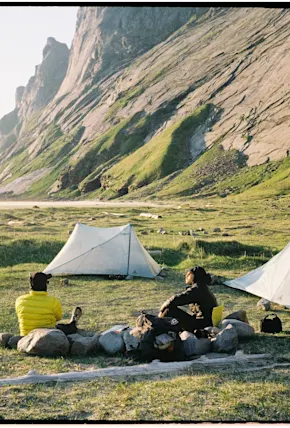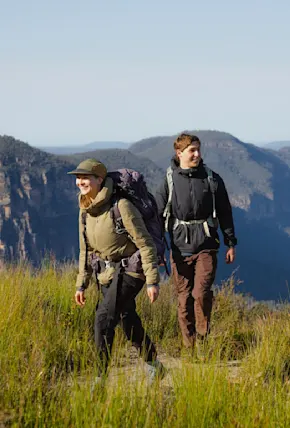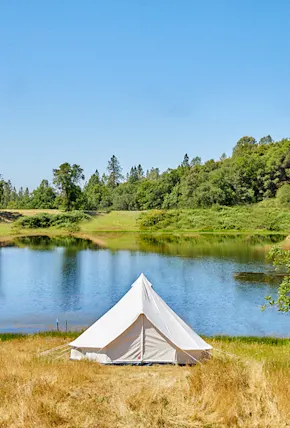The Sport-Brella umbrella beach tent offers UPF 50+ sun protection, water-resistant fabric, and extra useful features compared to a typical beach umbrella. The center pole is durable with a built-in tilt mechanism, a specialized twist handle, and an oversized spiral auger bit at its base that anchors securely in grass, dirt, or sand. Zippered windows and retractable side flaps provide the option for extra airflow when needed. When your beach trip is over, this beach umbrella tent packs away easily in a carrying case.
Price: $65
SHOP NOW
Everything You Need to Know About Beach Tents
Different Types of Beach Tents
Different types of tents will determine how easily you set up camp on the beach and how much protection you get from the sun. Below are the most common types of beach tents and their different qualities to help you search for the perfect tent.
Continual Pole Pop-up Beach Tent
The poles in a continual pole pop-up beach tent are all connected—they do not need to be assembled or taken apart. Instead, a continual pole pop-up beach tent is designed to collapse when twisted in a certain way. This makes it easy to break down and pack away in its carry bag. To set it up, you simply need to untwist the tent, and it pops up, essentially pitching itself.
Traditional Pole Beach Tents
A traditional pole tent can have individual collapsable poles that need assembly and a lightweight body or cover material, much like a typical backcountry camping tent. Some, like our pick from Snow Peak, will have removable walls to regulate airflow (mesh lets air in and keeps bugs and sand out).
Hybrid Beach Tents
Hybrid beach tents look like traditional pole tents but have the convenience of pop-up tents. Usually, they have retractable poles attached to a string. To pitch a hybrid beach tent, you simply need to pull on the string and the tent pops up.
Classic-style Beach Tents
Classic-style beach tents are similar to traditional camping tents. They give you the most privacy and protection with walls on three sides, leaving the fourth side open to face the ocean. The fourth side might have a door that you can close (and lock) if you want or need to. This design keeps out the wind, rain, and sun, without obstructing your view.
Canopy Beach Tents
A canopy is a simple beach shelter that usually has open sides. Some may have a wall that can be attached if needed. They can usually accommodate more people than traditional beach tents. Beach canopies often have a higher ceiling than beach tents, which makes it easy to stand up and move around in them.
Umbrella Tents
Beach umbrella tents are a hybrid between a tent and a beach umbrella. They are often a more affordable tent option. Beach umbrella tents are set up like a normal beach umbrella but have additional material that extends down the sides to provide added shade (like an umbrella mullet). These are easy to use but can blow away in strong winds (unlike a mullet).




















